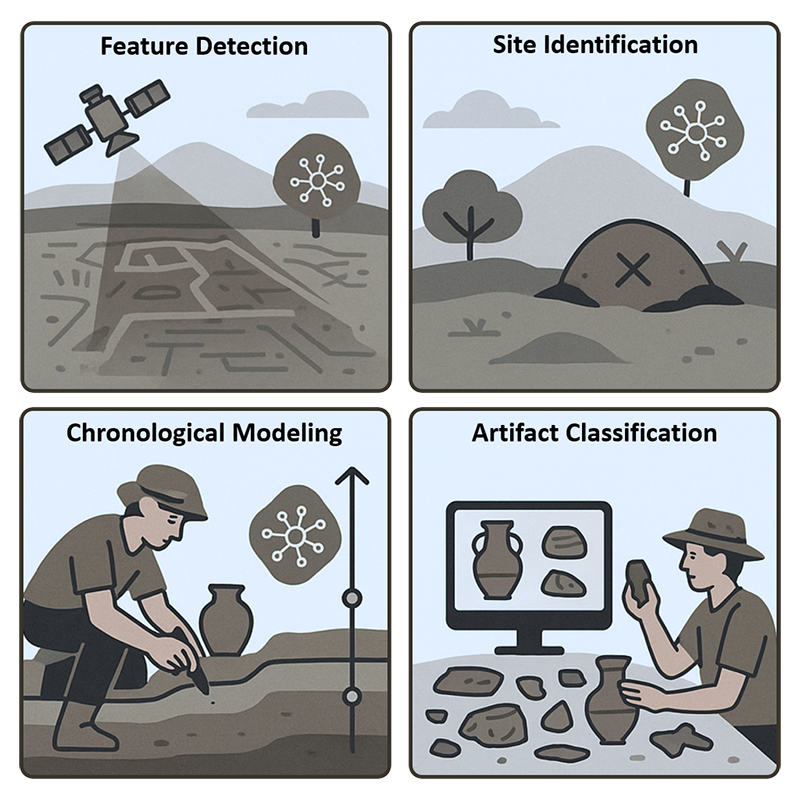Prehistoric Archaeology, the study of ancient human societies before written records, has traditionally relied on methods such as excavation, artifact analysis, and historical context. However, the advent of machine learning (ML) has opened new vistas for understanding our ancient past, particularly in the rapid identification and classification of archaeological features and objects.
ML techniques bring more specificity and versatility to archaeologists in four key aspects. First, archaeologists often unearth a plethora of artifacts during excavations. ML models can automatically classify pottery fragments, tools, and other objects based on their visual characteristics. By training on labeled datasets, these algorithms learn to distinguish between different artifact types, streamlining the analysis process.
Second, efficiently locating archaeological sites is crucial. ML predictive models consider factors like topography, soil composition, and historical data to identify potential sites. By analyzing geospatial information, ML helps archaeologists focus their efforts on promising areas, leading to the discovery of previously unknown sites.
Third, satellite imagery, LiDAR scans, and aerial photographs provide valuable insights into ancient landscapes. ML algorithms process these data sources to detect subtle features like buried structures, ancient roads, and terraced fields. By automating feature extraction, ML enhances our understanding of prehistoric settlements.
Lastly, determining the age of artifacts and archaeological layers is essential. ML assists in radiocarbon dating, dendrochronology, and Bayesian modeling. These techniques help establish chronological sequences, allowing us to piece together the timeline of human activities in different epochs.
Despite these advancements, we still face several challenges and opportunities. Archaeological data can be sparse, fragmented, and noisy. ML models must handle missing information and account for uncertainties. Biases present in historical records or excavation practices can influence ML results. Researchers must be vigilant in addressing bias to avoid perpetuating inaccuracies. Validating ML models against ground truth data, such as manual artifact classification, can be resource-intensive. Balancing accuracy and cost is crucial.
By combining ML with traditional methods, we unlock hidden stories from the past. As we refine algorithms and address challenges, we gain fresh perspectives on prehistoric civilizations. The silent whispers of ancient artifacts find resonance in the hum of neural networks, bridging the gap between antiquity and modernity. The past is not just a relic; it’s a puzzle waiting to be solved, one ML algorithm at a time.

Please note that ChatGPT (OpenAI, https://chatgpt.com/) was used to refine parts of the text and the figure, which was subsequently edited by the author for structure, style, and content.

